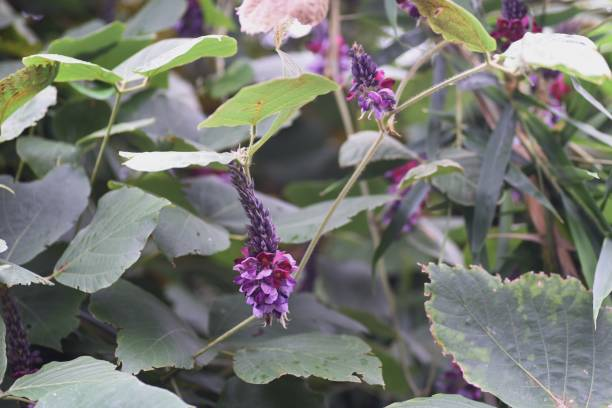
Sadie and Jarvis Sampson tried for years to have a baby, using every method they could think of. They eventually accepted that they might only ever be an aunt and uncle. Then, one day, they got a text that changed their lives completely.
The couple had been trying to get pregnant since they got married in January 2018, but when it didn’t happen on its own, they tried everything else.
“We used ovulation tests, took prenatal vitamins, tracked cycles with apps, and used fertility monitors,” the Houston mom told Love What Matters.
“We even tried advice from friends, family, and strangers. For 14 months, we tried, prayed, and waited. Month after month, it was always a negative pregnancy test. It seemed like we might need help to conceive, so we even talked to doctors about it.”
Doctors didn’t offer much help to the couple. They mostly told Sadie to lose weight to improve her chances of getting pregnant. With no other advice, she had gastric surgery and lost 28 pounds.
Sadie’s OBGYN was excited about the weight loss and praised her for it.
“She told me that if I wasn’t pregnant within six months, she would refer me to a fertility specialist because she couldn’t prescribe fertility medication herself,” Sadie said. “I was thrilled! We finally got a positive step forward, even if it wasn’t immediate. We were excited about the progress.”
Unfortunately, the couple didn’t get pregnant after Sadie lost the weight, and they felt like they were back where they started.
“I always felt like I was meant to be a mother,” Sadie said. “Even though my surgeon warned me that I’d be very fertile after the surgery, I still wasn’t getting pregnant. So, we gave up and accepted that we might just be aunt and uncle to our nieces and godparents to our goddaughters.”
Just when the couple had decided to stop trying to have a baby, Sadie got a text from a friend asking if they would think about fostering a baby from a couple she knew.
At first, the couple was hesitant because they were told by a caseworker to take care of the baby while the birth mom was getting treatment. They worried they might get too attached. But then, the situation changed.
“The birth mom has decided she wants you to adopt the baby instead,” the caseworker said.
Sadie remembered saying, “‘Holy crap!!’ out loud when she found out she was going to be a mom.
“We went from having no kids to possibly fostering one, to suddenly being told, ‘You’re going to be parents!’ I was still in shock as I listened to the caseworker. I hung up and called my husband, shouting, ‘Babe!! They want us to adopt the baby! We’re going to be parents!’ He said, ‘Wait! REALLY?! I thought they just wanted us to foster him!’ I told him, ‘Nope! They want us to be his mom and dad.’”
The couple spent the weekend trying to take in the shocking news and getting ready, just in case the birth mom changed her mind.
By Monday, they were not only told that the birth mom still wanted them to adopt the baby, but she also wanted to do an independent adoption and was ready to sign the papers that day.
Their baby boy was born at just 33 weeks, which is seven weeks early. He weighed 4 lbs. 5 oz. “He was so tiny, he literally fit in one of my husband’s hands,” Sadie wrote.
“He was wrapped in a white blanket with pink and blue stripes,” Sadie said. “He had a small tube coming out of his nose because he couldn’t eat on his own since he was born early. But he was so cute!!!”
The couple shared their news on social media and were encouraged to create a registry. They listed 72 items, and within just three days, 55 of them were already bought for them.
Ezra Lee’s adoption was finalized in October 2020, and the couple had adorable family photos taken, all wearing t-shirts that said, “Families don’t have to match.”
In 2021, Sadie and Jarvis became parents to twin girls, Journee and Destinee, through embryo donation. True to their family motto, “Families don’t have to match,” the Black couple now has three white children – a boy and two girls.
For anyone who might judge their beautiful family, they have just one response: their family is built on the strongest foundation ever – love.
It turns out it was all just a misunderstanding
Ever picked up something that looked like a purple sweet potato and thought, “This is going to be delicious!”—only to discover it was something entirely different? That’s exactly what happens with the purple Kudzu (scientific name: Pueraria montana var. lobata). While it might share a similar appearance to your favorite root vegetables, this climbing plant is an unsung hero in the world of traditional medicine, offering far more than just a striking purple hue.

What Is Purple Kudzu?
Purple Kudzu, a member of the pea family (Fabaceae), is a climbing vine that originates from Asia, primarily flourishing in hilly and mountainous regions. This plant, often mistaken for a root vegetable like a purple sweet potato, is prized not for its taste but for its medicinal properties.
Kudzu has been celebrated for centuries, especially in Chinese and East Asian traditional medicine. With its heart-shaped leaves, vibrant purple flowers, and large starchy roots, Kudzu stands out both visually and medicinally. Its roots are where the magic happens—packed with bioactive compounds that offer an array of health benefits.
The Surprising Benefits of Purple Kudzu
You’re probably wondering, “What makes this plant so special?” Let’s explore the ways purple Kudzu contributes to health and wellness.
1. A Natural Energy Booster
Feeling a little sluggish? Purple Kudzu has long been used as a natural remedy to enhance vitality and energy levels. Traditional medicine practitioners believe it helps invigorate the body, making it a popular choice for individuals seeking to improve stamina and fight fatigue.
2. Supports Kidney and Reproductive Health
In traditional Eastern medicine, the kidneys are considered the root of vitality. Purple Kudzu is often prescribed to strengthen kidney function and promote reproductive health. It’s thought to balance the body’s internal energy and contribute to overall wellness.
3. Joint Health and Pain Relief
Suffering from aching joints or stiffness? The anti-inflammatory properties of Kudzu roots can work wonders. It’s often used to alleviate joint pain, improve mobility, and reduce swelling—making it a natural alternative for those dealing with arthritis or related conditions.
4. Anti-Aging Powerhouse
Who doesn’t want to turn back the clock a little? Purple Kudzu is rich in antioxidants, which help combat free radicals responsible for aging. Regular use of Kudzu in teas, supplements, or decoctions can contribute to healthier skin and improved overall vitality.
5. Blood Sugar and Heart Health
Emerging research suggests that Kudzu may help regulate blood sugar levels and improve cardiovascular health. Its natural compounds, including isoflavonoids and saponins, are believed to support healthy blood flow and reduce the risk of chronic diseases.
How Is Purple Kudzu Used?
If you’re intrigued by its benefits, you might be wondering how to incorporate this versatile plant into your routine. Here are some of the most common ways to use purple Kudzu:
1. Herbal Teas
The dried roots of the purple Kudzu plant can be steeped to make a soothing tea. This traditional preparation is one of the easiest and most accessible ways to enjoy its health benefits.
2. Decoctions and Extracts
For a more concentrated dose, Kudzu roots can be boiled down into a medicinal decoction. These extracts are often used in traditional medicine to address specific health concerns.
3. Fermented Wine
In some regions, purple Kudzu is fermented into wine, combining its health benefits with a unique and flavorful beverage. This method preserves the plant’s natural compounds and offers a distinctive way to enjoy its properties.
Identifying Purple Kudzu vs. Purple Sweet Potato

Still confused about how to tell these two apart? While both might look similar at first glance, purple Kudzu has distinct characteristics that set it apart:
- Texture: Kudzu roots are often tougher and more fibrous compared to the smooth and tender texture of a purple sweet potato.
- Color: While both share a rich purple hue, Kudzu roots may have irregular color patterns, often with streaks or a lighter core.
- Taste: Purple sweet potatoes are sweet and starchy, whereas Kudzu roots are bitter and typically not consumed directly as food.
If you’re in doubt, always double-check with the vendor or do a quick taste test!
Caution: A Little Goes a Long Way
As powerful as purple Kudzu is, it’s important to use it responsibly. Overuse or improper preparation can lead to side effects, such as digestive discomfort. It’s always a good idea to consult with a healthcare professional or a trained herbalist before adding it to your regimen, especially if you’re new to herbal medicine.
Why Quality Matters
When it comes to herbal remedies, not all products are created equal. Ensure you’re purchasing high-quality purple Kudzu from trusted sources. Authenticity and purity are crucial to reaping its full benefits, so look for certifications or recommendations from reputable sellers.
The Verdict: A Medicinal Marvel in Disguise
So, the next time you mistake purple Kudzu for a sweet potato, don’t be too disappointed. What you’ve stumbled upon is a treasure trove of health benefits wrapped in a humble, unassuming root. From boosting vitality to supporting joint health and fighting the signs of aging, this plant offers more than meets the eye.
Purple Kudzu is a testament to nature’s ability to provide us with powerful, holistic remedies. By understanding its uses and potential, you can unlock a healthier, more balanced lifestyle. So, go ahead—embrace the benefits of this misunderstood marvel. You just might find it’s exactly what you’ve been looking for!



Leave a Reply